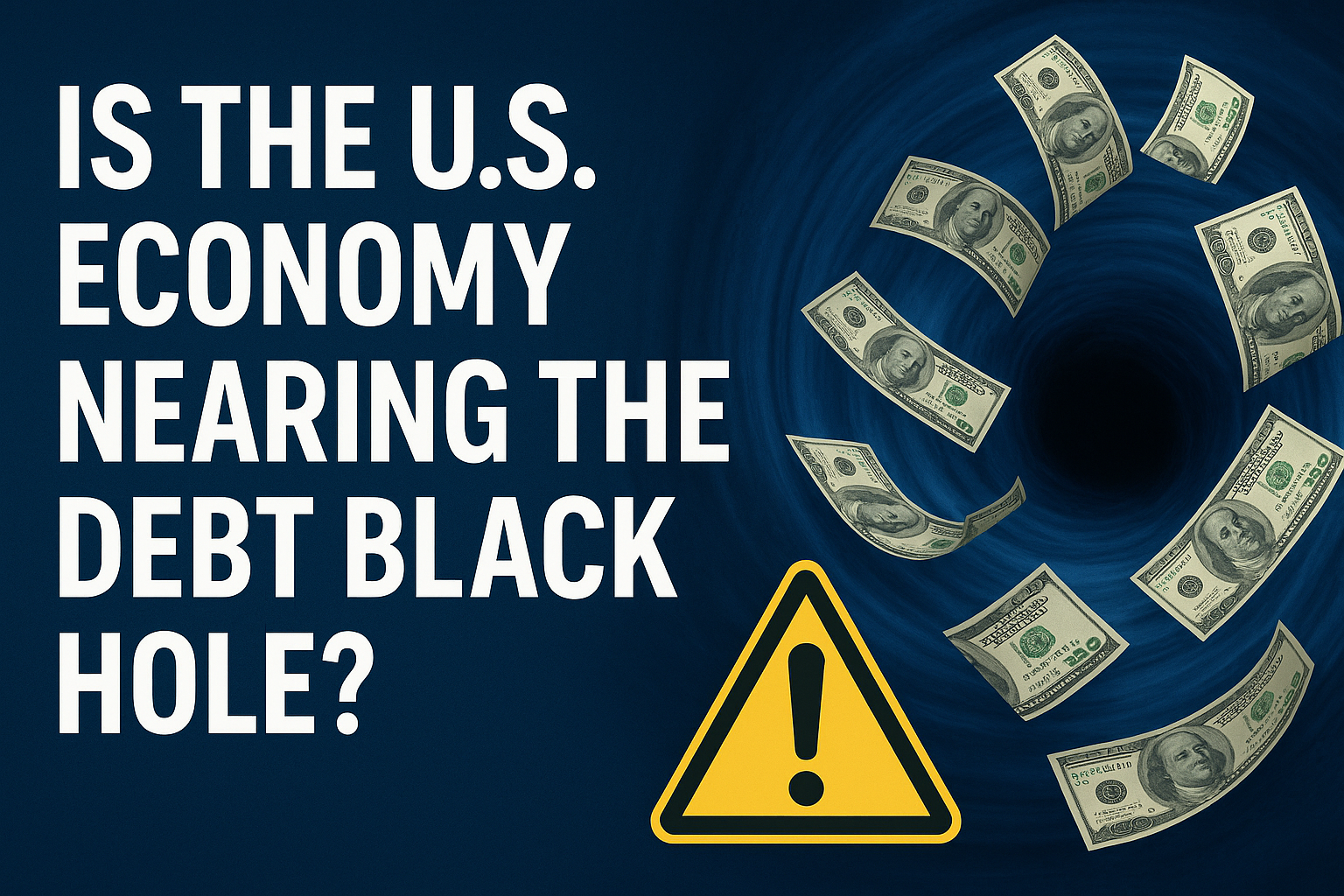Is the U.S. Economy Nearing the Debt Black Hole?
U.S. debt may be approaching the tipping point. Learn what this means for markets, inflation, and how to protect your investments.

TL;DR:
- When debt stops contributing to GDP, economies enter a “black hole” phase—growth slows, inflation spikes, and currencies fall.
- The U.S. may be approaching this critical threshold, driven by rising debt and political risks.
- Investors should consider gold, equities, and unleveraged real estate as potential hedges.
Introduction:
The U.S. is walking a dangerous economic line—one where debt no longer drives growth but instead accelerates decline. Ross Healy calls this the Black Hole Condition, and if history is any guide, the implications are significant. In this week’s Friday Focus, Ross outlines what the data shows, how previous economies collapsed under similar strain, and what investors can do to protect their portfolios before it's too late.
🎥 Or catch the full video breakdown on our YouTube Channel.
Understanding the Black Hole Condition
What Happens When Debt Outpaces Growth?
A critical chart shows how each dollar of new debt adds less and less to GDP over time. Initially, debt supports economic growth. But once a key threshold is reached, the marginal returns diminish—and eventually turn negative.
Ross highlights that:
- The breaking point occurs around $3.50 in debt per $1 of GDP.
- At this level (a debt efficiency ratio of 0.289), additional borrowing yields no real economic gain.
The Warning Signs Are Here
Ross outlines three major red flags that emerge when a country enters this debt spiral:
1. Currency Devaluation
As GDP growth slows while debt increases, global confidence in the currency wanes. This leads to depreciation.
2. Rising Inflation
With excess money printing and low productivity growth, inflation begins to rise. This eats into purchasing power and triggers market instability.
3. Accelerating Interest Rates
To fight inflation, central banks must raise interest rates. This increases the cost of borrowing, deepening economic strain—especially for leveraged assets.
Ross points out that this pattern has played out in 58 countries since 1900.
Where Does the U.S. Stand Now?
The U.S. is seeing signs of fiscal stress:
- Massive tax cuts (such as those passed under Trump) are adding significant debt.
- Political uncertainty, including threats to central bank independence, raises the risk of unchecked money printing.
Together, these push the U.S. closer to what Ross describes as an economic point of no return.
What Should Investors Do?
Based on historical data and current indicators, Ross outlines three strategies:
1. Buy Gold and Silver (or Precious Metal Stocks)
Gold and silver often rally in times of currency instability. Recent market activity suggests investors are already anticipating future risk.
2. Own Stocks
In hyperinflation scenarios, stock markets have historically risen to partially offset currency losses. Ross points to:
- Germany (Weimar era)
- Mexico (1980s hyperinflation)
In both cases, equities acted as a partial hedge.
3. Hold Unleveraged Real Estate
Real estate can be a stable asset—but only when it's unleveraged. Rising interest rates can crush borrowers with adjustable-rate loans. Ross shares a personal anecdote from 1980s Mexico, where interest rates hit 100%, making leveraged properties financially devastating.
Are We There Yet?
Ross cautions that while we may not have officially entered the black hole yet, all the signs suggest we’re dangerously close. Market strength, rising inflation, and accelerating debt levels all point to a potential inflection point.
Conclusion: The debt warning signs are flashing.
Investors need to stay alert. Protecting your portfolio means understanding these macroeconomic shifts and preparing accordingly.
📊 Want deeper analysis? Explore more insights on Strategic Analysis.
.png)







